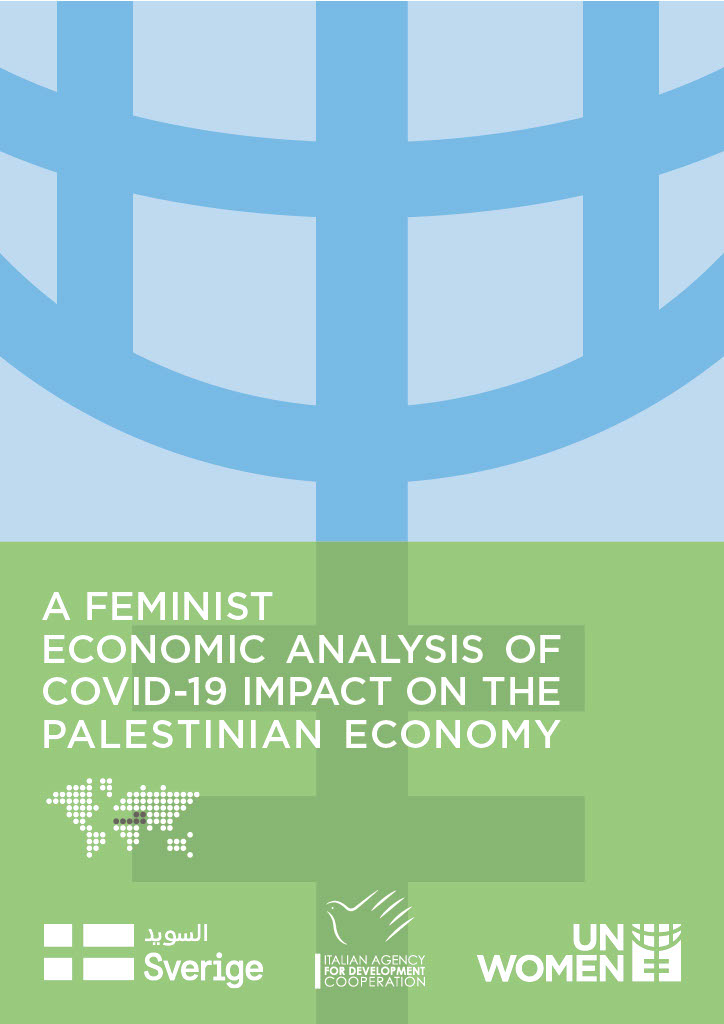
A FEMINIST ECONOMIC ANALYSIS OF COVID-19 IMPACT ON THE PALESTINIAN ECONOMY

Women more persistently lost jobs than men, particularly in the personal services, accommodation, and trade sectors. As a result, women’s wage mass saw a stronger decline. However, for most sectors, excluding trade, job losses were likely concentrated among low pay and informal workers, recurrently resulting in increasing average wages.
Women more frequently lost their jobs and faced stronger relative reductions of their working hours in the Gaza Strip than in the West Bank. The evidence on Palestinian workers inside Israel and settlements is mixed, with some signs of men being less negatively impacted (in terms of employment and working hours) than in the State of Palestine.
Women who owned or led businesses were severely impacted by the pandemic and considerably more so than men. Women entrepreneurs in the critical and high-contracting sectors experienced job losses likely associated with the closure of their businesses. Most of the businesses closed or jobs lost by female entrepreneurs were in the grey economy. These businesses did not employ other workers in most cases, potentially reinforcing their subsistence role.
The unemployment rate declined during the pandemic, for both men and women, which shows increased passivization of the labour market. However, women in the State of Palestine were already underrepresented in the labour market, so that the additional passivization has been rather negligeable in relative terms. Within the overall passivization, discouragement was observed, yet this was primarily a male phenomenon, both for those who were inactive and for persons not in employment, education or training (NEET). Women did not see an increase of hours devoted to unpaid work in their own households. While an increase was noted ffiscalin aggregate, it was mainly salaried women and unemployed housewives who reported an increase in the workload for household chores. Unpaid contributing members of the household and inactive women generally saw a decline of such workloads, probably because of the need to compensate the potential reduction in hired workers in agriculture and the already high shares of time devoted to household and care.
Palestinian authorities undertook measures to counteract the negative economic outcomes of the COVID-19 pandemic and to protect the livelihoods of workers, including those who are informally employed (social aid programmes) and the self-employed (funds A FEMINIST ECONOMIC ANALYSIS OF COVID-19 IMPACT ON THE PALESTINIAN ECONOMY 6 for MSMEs); and particularly of those who lost jobs during the pandemic. While the response was timely and strongly donor-supported, various stakeholders highlighted its insufficiency, which could also have been related to fiscal strain.
Immediate and longer-term measures to be undertaken by the Palestinian authorities are needed to ensure a gender-responsive recovery from the pandemic. Currently, further fiscal support of reemployment subsidies to combat labour-market passivization and scarring as well as extension of social aid may prove key to the recovery phase. Likewise, revised measures related to supporting SMEs, particularly those owned and/or led by women, may give a boost to the post-COVID-19 recovery.
Deeper structural reforms are needed to address existing vulnerabilities and ensure preparedness for future shocks. A more comprehensive and better targeted social protection system needs to be designed and instituted in State of Palestine involving, at the minimum, social aid programmes and unemployment insurance. Well-thought-out campaigns may soften the constraint that cultural norms exert on female labour-market participation. Finally, fiscal and monetary policy must be implemented with a gender lens, prioritizing investments in national social and healthcare service infrastructure.